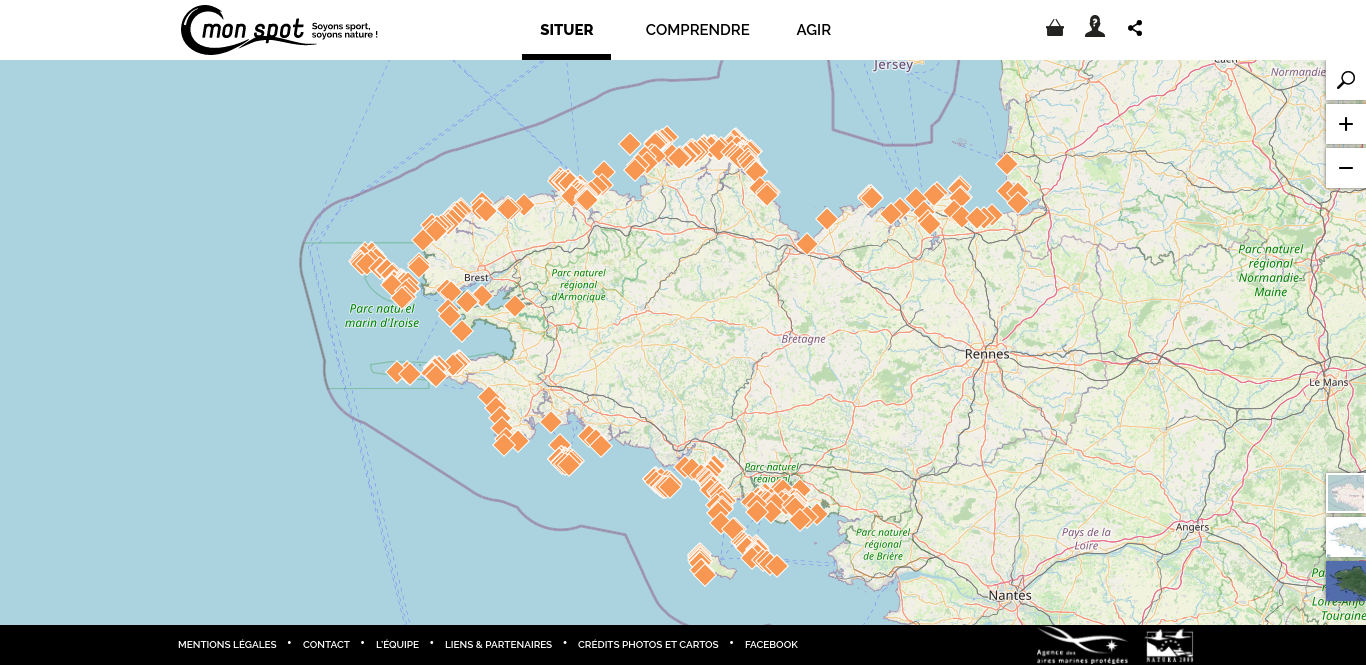The ocean for us with “C mon Spot !” Do your water sports while respecting marine biodiversity
On this World Oceans Day, under the aegis of the United Nations, the French Biodiversity Agency (OFB) urges you to resume your recreational nautical activities but calls for the greatest vigilance during this intense bird nesting period to avoid disturbance. To accompany you in your activities, the OFB has developed an original informational and awareness-raising tool for the Breton shoreline, the C mon spot website, to enable each and every person to be actively involved in biodiversity conservation.
Fragile populations dependent on nesting success
The resuming of seaside outdoor activities coincides with the peak of the nesting season for threatened birds such as plovers, oystercatchers, terns and seagulls. These species nest on the ground, either on beaches or islets with sparse vegetation away from land predators (dogs, foxes, etc.), disturbance and gusts of wind. In France, Brittany plays a major role in seabird nesting due to its long coastline and numerous islets.
These heritage species are very sensitive to disturbance, which can disrupt their breeding and impact the renewal of populations. They are fragile and some are declining in numbers.
Certain species which nest on the upper beach like Kentish Plover, Ringed Plover or Oystercatcher were able to take advantage of the exceptional lack of disturbance during the two-month lockdown to nest on usually busier beaches, making their nesting particularly vulnerable when the lockdown ended.
An interactive tool serving biodiversity: C mon Spot
Anybody can now find out about the sensitivity of a coastline for seabird nesting. The website C mon Spot and the associated Facebook page, run by the OFB, offer interactive and educational maps of the Breton coastline along with recommendations for doing sports activities without disturbing birds and seals.
Designed and based on data provided by managers of marine protected areas and nature-watching associations, the tool can be used to locate high-priority beaches and spots for sporting activities. Information is given on the species present and advice to avoid any disturbance to the birds.
Some good practices to be shared
Between March and July, depending on the site, birds nest on islands, islets, beaches and cliffs. Be attentive to the presence of birds and their behaviour. Distance yourself if you note any agitation, alarm calls or birds flying off. During this period, it is preferable to sail at a good distance from the islands and it is essential to respect landing restrictions. When walking on the beach, beware of plover nests on the upper beach and opt for walks on the foreshore. If you have a dog, keep it on a leash to avoid birds flying off unnecessarily.





